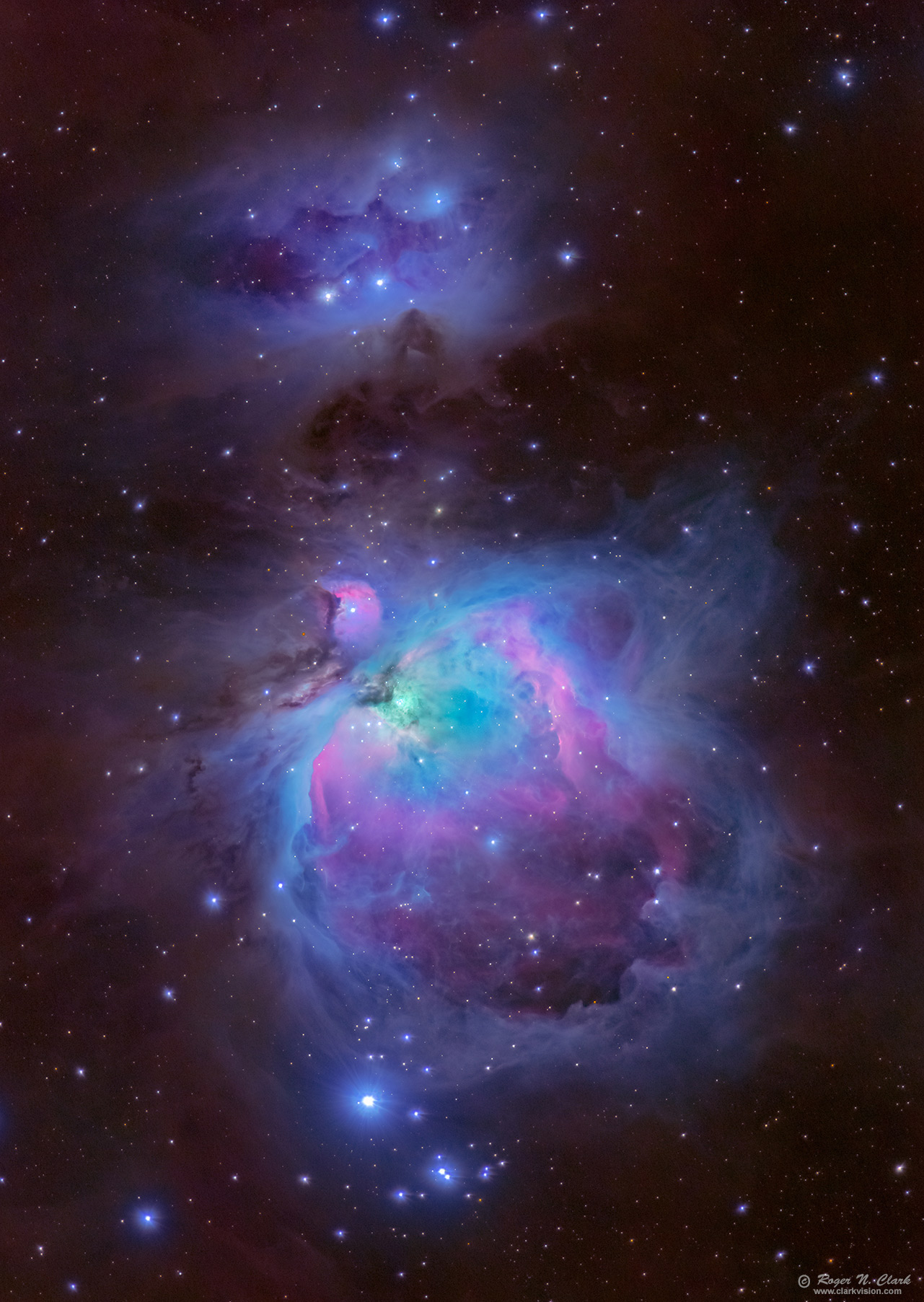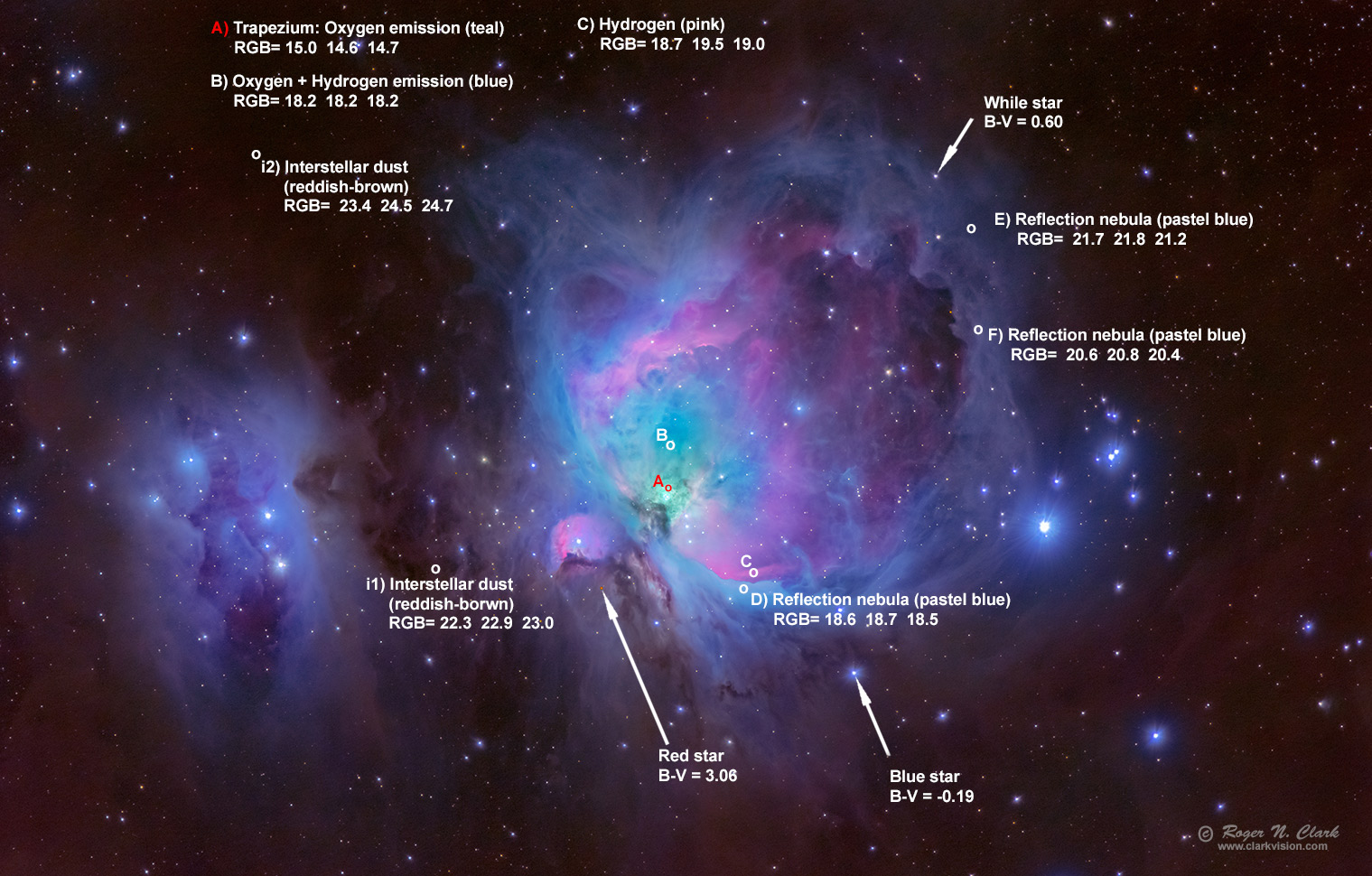| Home | Galleries | Articles | Reviews | Best Gear | New | About | Contact | Gallery Index | Previous |
Next |

| Home | Galleries | Articles | Reviews | Best Gear | New | About | Contact | Gallery Index | Previous |
Next |

The Great Orion Nebula, Messier 42, shows beautiful colors. The green/teal in the center (Trapezium area) is due to oxygen emission. The pink is from hydrogen emission and the blue is reflection from the many blue stars in the area. This area is an intense stellar nursery. These colors can be seen in large amateur telescopes. Faint reddish-brown interstellar dust is in the background.
Technical. This image was obtained with a stock Canon EOS 90D DSLR Camera and a Canon 300 mm f/2.8 L IS II lens plus a Canon Extender EF 2X III (teleconverter) Total exposure time was 74.9 minutes. The bright Trapezium area includes eleven 1-second exposures, and 24 2.6 second exposures. The brighter region surrounding the Trapezium included 16 6.2 second exposures and the rest of the area was 72 1-minute exposures, all at ISO 1600, f/5.6, 600 mm focal length and daylight white balance. This image was obtained from the slopes of Mauna Kea, Hawaii (9,000 feet) on a bright airglow night (Bortle 3, borderline 4), and during high winds, gusting to about 30 miles per hour. Raw conversion in photoshop to Adobe RGB color space. Photoshop included a lens profile so the raw converted images are highly calibrated with a flat field (in the lens profile), bias corrected, and the sensor blocked dark current. Stacking in deep sky stacker. Stretched with rnc-color-stretch, and final adjustments in photoshop. No darks, no flats, no bias frames measured (flat field is in the raw converter lens profile and corrected during raw conversion). This is a highly calibrated image with color managed workflow. The exposures were tracked on an iOptron HAE29EC strain-wave mount with high resolution encoders and no guiding (because autoguiding delays do not work well in gusty wind). Original plate scale = 1.1 arc-seconds per pixel. The image here is at 3.3 arc-seconds / pixel.
This is a natural color image.

The Exposure Factors, CEF, CEFA are measures of the relative amounts of light received from a subject. It can be used to fairly compare wildly different lens/telescope apertures and exposure times. For this image the, 96 second exposure yielded:
Modern digital cameras like the Canon 90D include on sensor dark current suppression technology and low fixed pattern noise at ISOs around 800 and higher, making no need for dark frame subtraction. Modern raw converters correct for light fall-off and also correct for hot/dead/stuck pixels. This makes processing low light images easy: simply align and average.
Also see Astrophotography Image Processing Basic Work Flow.
To learn how to obtain stunning images like this, please visit my Extensive Articles on Photography .
Keywords to this image = astrophoto-1 Messier nebula low-light digital_astro canon_90d rnc-color-stretch NEW
Image ID: m42-600mm-rnclark-c12-02-2024-acr-IMG_3505-671-av75min-i-0.33x-crs.jpg
| Home | Galleries | Articles | Reviews | Best Gear | Science | New | About | Contact |
Last updated April 02, 2025